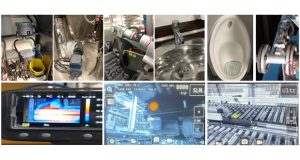 Are you getting the actionable insights you need to make smarter maintenance decisions? Prabhu Ramachandran, CEO at Facilio with advice on data-led maintenance to achieve operational excellence
Are you getting the actionable insights you need to make smarter maintenance decisions? Prabhu Ramachandran, CEO at Facilio with advice on data-led maintenance to achieve operational excellence
From HVAC runtimes and energy usage patterns to asset health logs and maintenance reports, FM today operates in a world brimming with data that holds the potential to transform operations, cut costs, and boost asset performance. But raw data on its own isn’t enough. The challenge isn’t in gathering information; it’s in making sense of it.
Below are the three core challenges faced by facilities managers in their journey toward achieving data-led maintenance.
DATA-RICH BUT INSIGHT-POOR
Facilities management systems generate a staggering variety of data points every day, from equipment runtime hours and energy consumption patterns to maintenance logs and asset health indicators.
Much of this information remains underutilised. Without a system that can present data in a clear and actionable way, facilities managers are forced to spend hours sifting through spreadsheets and manually correlating data from different sources.
The solution lies in deploying a system that not only stores data but also simplifies its interpretation for stakeholders. The system needs to go beyond merely collecting data to presenting it in a clear, intuitive format that provides a comprehensive view of all maintenance operations, making complex insights easier to grasp and act upon.
The power of such platforms lies in their ability to provide real-time dashboards displaying key performance indicators (KPIs) like MTTR and maintenance costs per asset.
For example, consistently high energy consumption from a specific HVAC unit can be easily identified as a trend when all relevant data is presented on a single platform rather than being scattered across multiple reports. By having access to such clear data trends, FMs can quickly identify the need for recalibration or replacement of faulty units, as well as detect assets nearing end-of-life through their rising maintenance frequency.
This shift from reactive to proactive planning minimises unexpected downtime, optimises costs, and enhances overall operational efficiency. Bridging the gap between raw data and actionable insights transforms facilities management from routine oversight to a strategy-driven discipline.
SCATTERED DATA SOURCES
Walk into any facility, and you’ll find a diverse array of systems managing different aspects of operations. While each system plays a vital role, the lack of integration between them creates data silos, making it difficult to get a complete picture of facility performance.
Disparate data sources mean that facilities managers must often rely on manual processes to piece together insights. Let’s illustrate this with a typical day: Without integration, managers constantly switch between systems—BMS for HVAC data, CMMS for work orders, and energy reports, which makes it easy to miss critical patterns, like an HVAC unit’s rising energy use tied to frequent maintenance issues.
This fragmented workflow means hours lost in cross-referencing data, delayed insights, and missed opportunities to optimise operations.
An integrated platform changes the game by pulling data from these disparate sources into a single interface. With all information in one place, patterns emerge more clearly. Take energy consumption. Linking occupancy data with HVAC performance might reveal opportunities to reduce energy use during off-peak hours or comparing maintenance costs across multiple sites can highlight operational inefficiencies or vendor issues that need addressing.
With an integrated and connected system, facilities managers can now benchmark asset performance across building portfolios in different locations, pinpoint outliers, and make data-driven improvements.
OWNING HISTORICAL DATA
In today’s outsourced maintenance environment, it’s common for third-party vendors to manage facility operations, including the software that collects and stores maintenance data. While outsourcing can bring short-term benefits, it often comes at the cost of data ownership.
When third-party vendors control your maintenance data, you risk losing access to valuable historical information. Without this data, long-term trend analysis, benchmarking, and strategic planning become impossible.
Facilities managers must own their facilities management software and the data it generates. Owning your data ensures that you can always access historical records and maintenance insights, even if you switch contractors / vendors or bring maintenance in-house.
Imagine having 10 years’ worth of maintenance logs for HVAC systems. With that data, it becomes much easier to predict when major overhauls or replacements will be needed, helping to avoid costly, unplanned downtime.
Regulatory compliance also becomes more straightforward when complete maintenance records are readily available, reducing audit risks and ensuring adherence to industry standards.
Beyond compliance, owning data provides flexibility in vendor relationships. Organisations can switch providers without worrying about losing critical information, ensuring continuity in operations.
Data is more than something that just accumulates, it’s a goldmine for driving smarter decisions. By holding onto their data, organisations aren’t just safeguarding the present; they’re setting themselves up for long-term success in an increasingly digital and data-driven world.
THE NEXT STEP IN DATA-LED MAINTENANCE
Transitioning to data-led maintenance isn’t without its challenges, but it’s a journey worth undertaking. The future lies in adopting platforms that bring clarity to complex datasets, unify fragmented information, and ensure complete data ownership. With such capabilities, facilities managers can move beyond day-to-day oversight to strategic decision-making that drives operational excellence.





